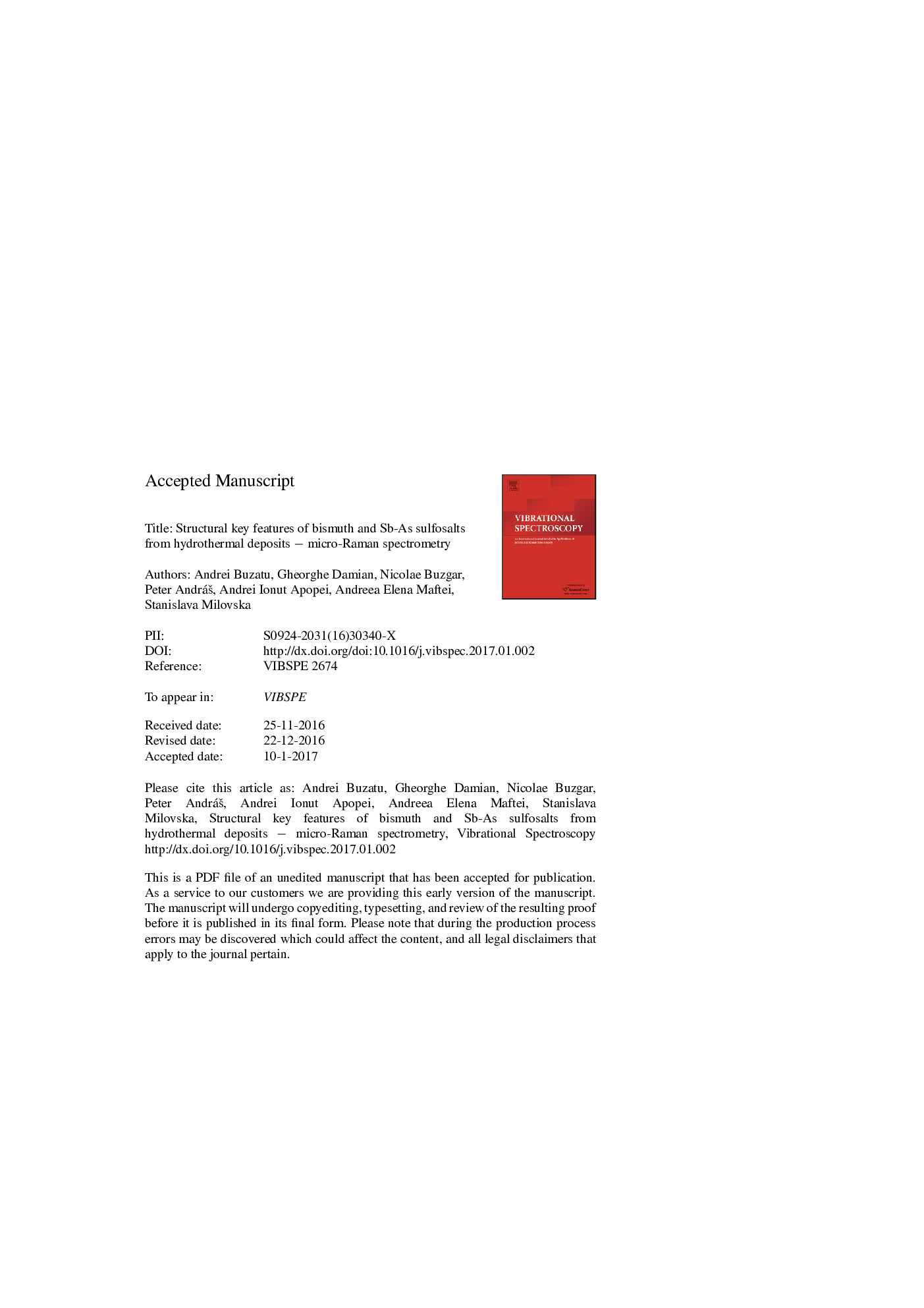| Article ID | Journal | Published Year | Pages | File Type |
|---|---|---|---|---|
| 5141975 | Vibrational Spectroscopy | 2017 | 26 Pages |
Abstract
The sulfosalt minerals are of great importance for a better understanding of ore forming conditions and mineralization distribution, especially in the case of hydrothermal deposits. So far, few Raman studies were conducted on this type of minerals. In the present work, were studied several samples from Baia Sprie ore deposit, Romania-a worldwide classic example for hydrothermal mineralizations. Bismuthinite, lillianite-gustavite, heyrovskyite, cosalite, tetrahedrite-tennantite, bournonite and semseyite have been analyzed using electron microprobe and Raman spectrometry. The Raman spectra of bismuth sulfosalts, Ag-rich tetrahedrite and semseyite are discussed for the first time. The Bi sulfosalts show typical ν1 symmetric stretching modes of the MS6 octahedra at 286-279 cmâ1, ν2 stretching at 216-207 cmâ1 and ν5 bending modes at 140-112 cmâ1. The transition from tetrahedrite to tennantite is very clearly observed in the Raman spectra. Several changes are marked through the solid solution, as the Sb-As isomorphic substitution takes place. Therefore, as the composition changes from As-member (tennantite) to the Sb-member (tetrahedrite), a shifting trend is observed in the Raman spectra, especially for the fundamental modes. The spectra of bournonite are dominated by two very strong lines at 325 and 296 cmâ1. The Raman band at 331 cmâ1 in semseyite is assigned to ν1 symmetric stretching modes of the octahedra. The ν2 stretching is observed at 212 cmâ1, while the bending mode ν5 appears at 148-143 cmâ1.
Related Topics
Physical Sciences and Engineering
Chemistry
Analytical Chemistry
Authors
Andrei Buzatu, Gheorghe Damian, Nicolae Buzgar, Peter AndráÅ¡, Andrei Ionut Apopei, Andreea Elena Maftei, Stanislava Milovská,
